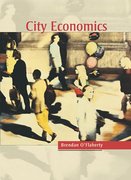4. Triple City is a closed city. The population consists of 300 non-Hispanic white (NHW) households, 100
Question:
4. Triple City is a closed city. The population consists of 300 non-Hispanic white (NHW) households, 100 Asian households, 100 African American households, and 100 Hispanic households. We will refer to all groups but NHWs as “minorities.” There are three neighborhoods, each with 200 houses.
NHW households prefer to live with other NHW households. Let w denote the NHW proportion in a neighborhood. So w is between 0 and 100.
NHWs are willing to pay up to 400 + w to live in that neighborhood. No one else cares about race. Minorities are willing to pay up to 500 for any house anywhere.
a. Show that 100 NHWs and 100 minorities in each neighborhood is an equilibrium. (That is, show that no household wants to move to another neighborhood.) Call this the integrated equilibrium.
b. Calculate the index of dissimilarity D for NHWs versus minorities.
c. Find price in each neighborhood. How much consumer surplus do minority households realize?
d. Show that 200 NHWs in one neighborhood and 50 in each of the other two is also an equilibrium, when house prices in each neighborhood equal the NHW willingness to pay. (That is, show that no household wants to move to a different neighborhood at the prevailing prices, and that if prices changed in one neighborhood, holding other prices constant, supply would not equal demand in that neighborhood.) Call this the segregated equilibrium.
e. Calculate the index of dissimilarity D for NHWs versus minorities for this equilibrium.
f. Find consumer surplus for minorities.
g. At which equilibrium are minorities better off?
Step by Step Answer:







